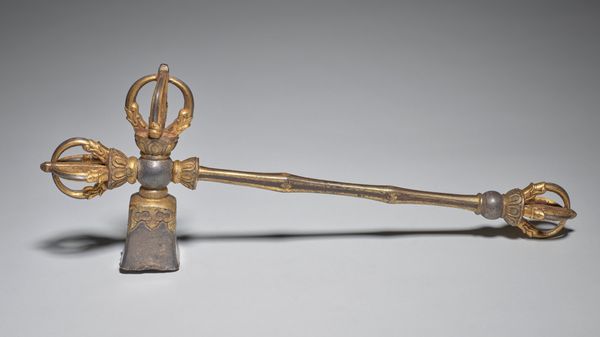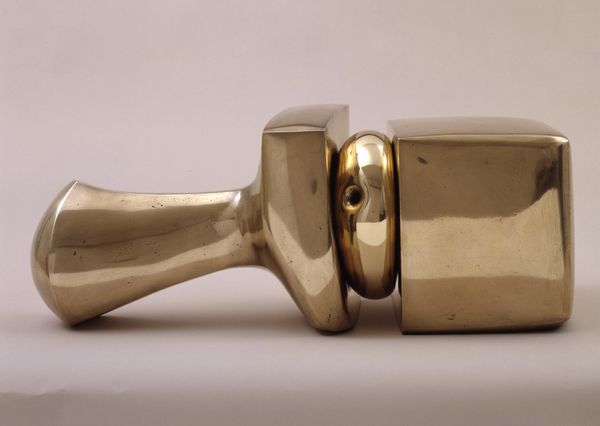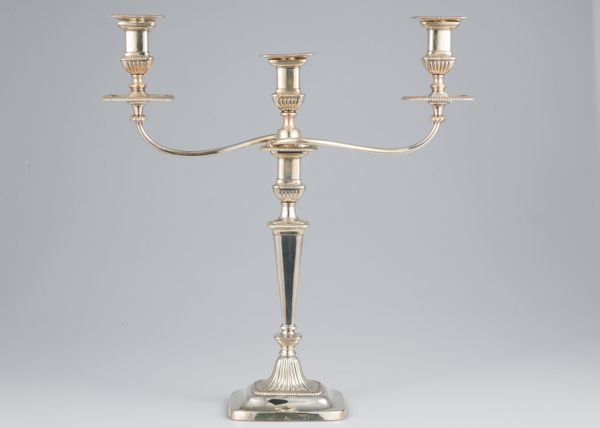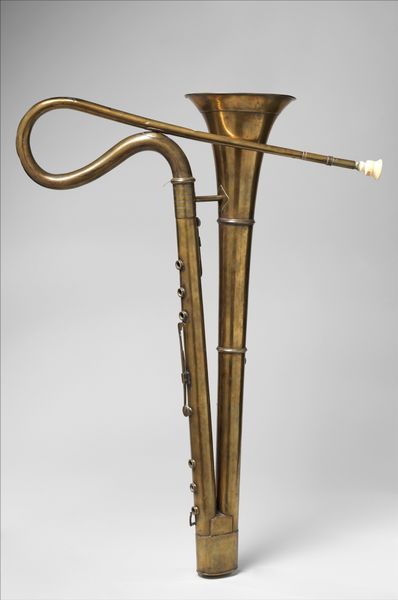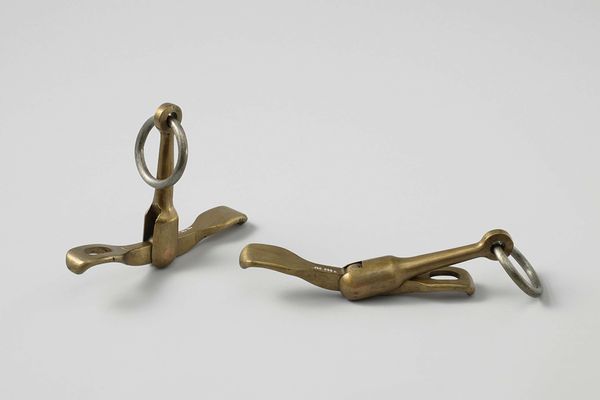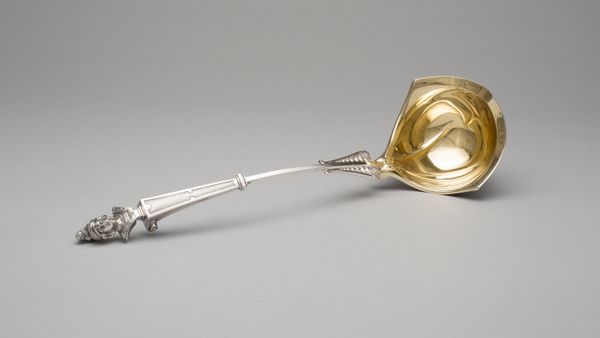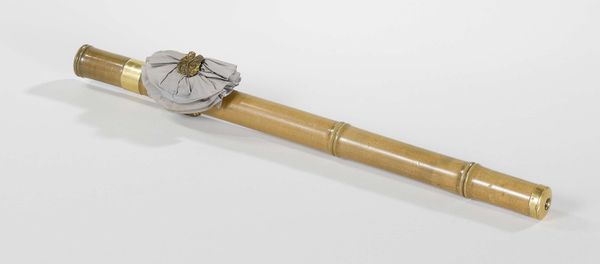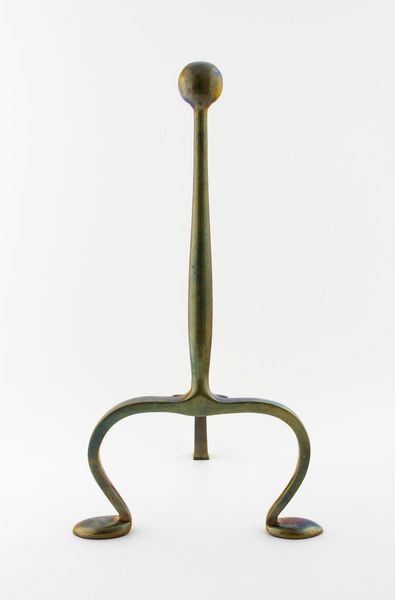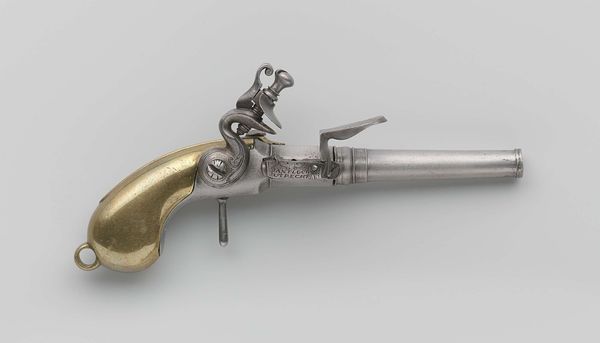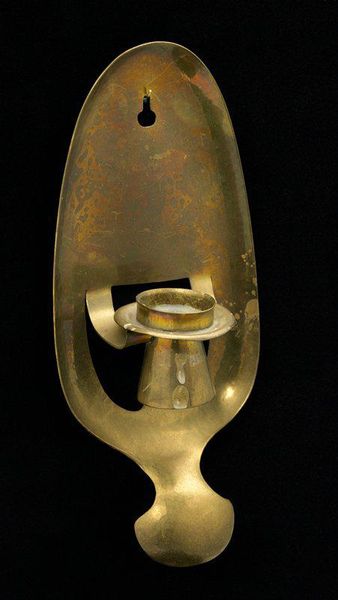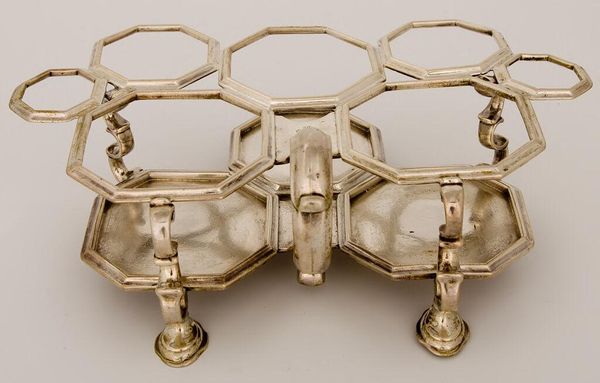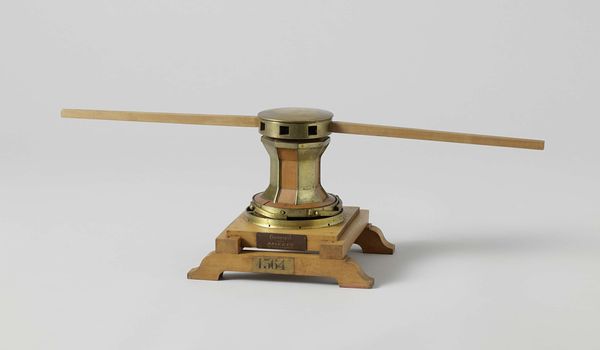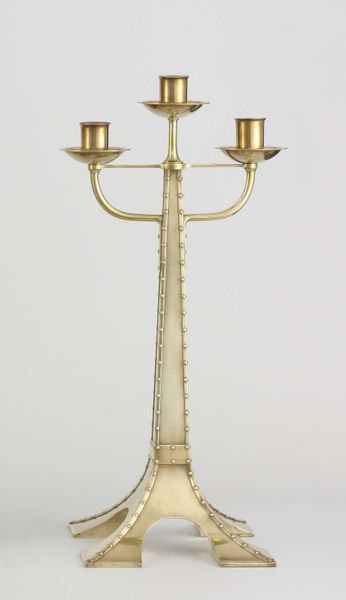
brass, sculpture
#
art-nouveau
#
brass
#
germany
#
sculpture
#
decorative-art
Dimensions: 7 1/2 x 11 x 7 in. (19.05 x 27.94 x 17.78 cm)
Copyright: No Copyright - United States
Curator: Isn't that a curious piece! It feels like it's caught in a perpetual balancing act. Like a frozen, golden acrobat. Editor: Indeed. What we’re looking at here is a Chamberstick, created around 1898. It’s the work of Richard Riemerschmid, crafted in Germany. Curator: I see that Art Nouveau influence so clearly, in that swooping, asymmetrical form! Almost like an organic thing that grew right there, as though its components had to reach for something. Editor: Exactly. Riemerschmid, situated in the applied arts tradition, elevates what could be a simple, functional object into a stunning brass sculpture. We must not forget, this wasn’t merely art, but something used, manufactured. Curator: To light the way, indeed! Though I feel a bit unsteady just looking at it, all cantilevered and poised to… well, topple? Maybe that’s part of the beauty though – this fragile tension. What about you, what sensations arise? Editor: It provokes reflections on the industrial processes that enabled Art Nouveau design. Brass wasn’t an effortless material. Consider the labor, the smelting, the crafting of each curve in this piece. What price elegance! Curator: A sobering contrast to my somewhat whimsical read! Now I am really questioning my original response. Its all very deliberate; the piece isn't accidental in its form, but carefully built with the production in mind, even while appearing free-flowing. Editor: The point of origin affects my view, seeing how new means and new art both serve the same people... that make life for other worse. However, that tension also gives this Chamberstick such intrigue; function marries artistry and economics. It still burns so brightly! Curator: Exactly! I will also remember that when viewing functional objects that serve beauty rather than simple necessity.
Comments
minneapolisinstituteofart almost 2 years ago
⋮
Riemerschmid numbers among the most important German designers of the 20th century, the leading figure of the "functionalist" wing of the Munich Jugendstil. His candlestick, with its simple diagonal stem set at a 140-degree angle to the base, is remarkable for its modernist forswearing of embellishment, its emphatic assertion of pure line and its ingenious functional design. One curved arm props it upright, the opposite arm serves as a handle.
Join the conversation
Join millions of artists and users on Artera today and experience the ultimate creative platform.
